SEO web design is a term that gets thrown around a lot. You might hear it from your boss or client about the new website you are creating for them, or you might hear it from your developer who is tasked with creating the perfect website for SEO purposes. But what does SEO web design mean? How does it affect SEO and Google search engine rankings? Can you even do both simultaneously?
Why is SEO web design important?
SEO web design is important for many reasons, including:
-
It affects the user experience.
-
It affects search engine ranking.
-
It affects conversion rate optimization.
-
It supports brand awareness and equity by providing a quality experience to visitors who come to your site through organic search results on Google or other search engines.
4 Ways SEO Web Design Can Affect SEO Performance
SEO web design is important because it affects the user experience, which in turn affects SEO.
A good website design can improve your ranking by providing a better user experience and making sure that your website is easy to navigate. It also serves as an indicator of the overall quality of your business. When a user visits your site or reads an article on your blog, they should be able to easily find what they’re looking for and not get frustrated with complicated menus or page designs that make it difficult for them to access what they need.
With this in mind, there are several factors that affect SEO performance:
-
The organization of information on the page
-
The length of time it takes for pages to load
-
How many links there are on each page
Website Speed Matters
It’s no secret that speed matters. The faster your website loads, the better it is for SEO. So how do you measure how long your site takes to load? There are a few tools out there to help you with this: Google PageSpeed Insights, WebPageTest.org and Pingdom Website Speed Test are just a few examples.
The best practice for making sure your website loads as fast as possible is to keep everything minimalistic and lean (this means not using lots of heavy scripts). Having fewer images on each page means it will load faster – but only if they’re really needed! If you can get away with using smaller images like those from Unsplash or Pixabay instead of hosting them yourself, then do so!
Keep an eye on what scripts are being loaded into each page too because these can sometimes be bloated with unnecessary code which slows things down unnecessarily. Finally – don’t forget about mobile users either; in 2018 mobile browsing was responsible for over half of all online activity worldwide! Make sure that any code/CSS stylesheets have been optimized specifically for mobile devices such as smartphones or tablets so they don’t slow down load time significantly when viewed through those devices
Mobile-Friendly or Mobile First?
Mobile-First or Mobile-Friendly?
When it comes to web design, there are two schools of thought: one is the mobile-first approach and the other is a “mobile friendly” approach.
The mobile-first method requires that you design your website from the top down (browser down) instead of starting with desktop screen resolution and working your way down. The reasoning behind this is that most people use smartphones as their primary browsing device; therefore, if you want your website to be visible on those devices and engage users who visit via smartphone, then you need to start at the base element—the phone itself—and work up from there.
In contrast, with a “mobile friendly” design, which is generally more common among small businesses, desktop screens come first while considerations for mobile devices come secondarily. They after they have been prioritized in terms of usability or aesthetics as needed based on user needs/expectations/experience level etc.
Do Not Harm SEO with Poor Design Elements and Coding
You might wonder what elements of design can harm your website’s SEO. The answer is a lot. Let’s take a look at some of the most common design mistakes that can hurt your site’s SEO:
-
Flash.
Flash websites have been known to harm a site’s search rankings because they don’t appear in Google results, and they’re also not very user friendly.
-
JavaScript.
JavaScript-heavy websites often take longer to load than HTML5 sites, which means you’ll lose traffic if your customers get frustrated and leave before it loads completely. You should also avoid using jquery as much as possible in order to reduce page size and improve load times, according to Search Engine Watch’s Paul Shapiro.
-
HTML5/CSS3 coding instead of JQuery/JavaScript coding
Since the latter is much heavier on bandwidth usage thus causing slower loading times—meaning that users may abandon the page before all content has loaded (and thus counting against your bounce rate).
The Copy & Content Play a Role, Too
After you’ve designed your website and optimized it for SEO, the next step is to make sure that there’s enough content on your site. You don’t want to have a lot of blank space or a single paragraph here and there.
If you’re having trouble coming up with ideas for what kind of content should appear on your website, use this checklist:
-
Use keyword research tools like Google’s Keyword Planner or Ahrefs’ Keywords Explorer tool to find out which keywords are relevant to your business (and therefore likely to be used by searchers).
-
Take note of what types of words people in similar industries use when describing their products or services—these are great places to start when brainstorming topics for blog posts!
-
Keep an eye on what people are talking about in social media—this is another great source of inspiration for blog post ideas (and can also help improve SEO).
Get a FREE SEO Web Design Consultation
Good SEO web design is a partnership between your business and the designer. You both have to work together to create an effective website that will help you rank in search engines, but it’s not as easy as simply slapping up some text and images on a page. There are many factors involved in making sure that your site can be found by Google—and then converting those visitors into customers!
If you are interested in improving your site’s rankings, getting a free consultation is one of the best ways to get started. A well-designed website can improve your rankings significantly and drive more traffic to your site. The first step is to fill out our contact form above and tell us about what you are looking for. Our team will review the information provided by you and recommend solutions that fit within your budget and goals. If this sounds like something that would be helpful for your business, contact us today!






